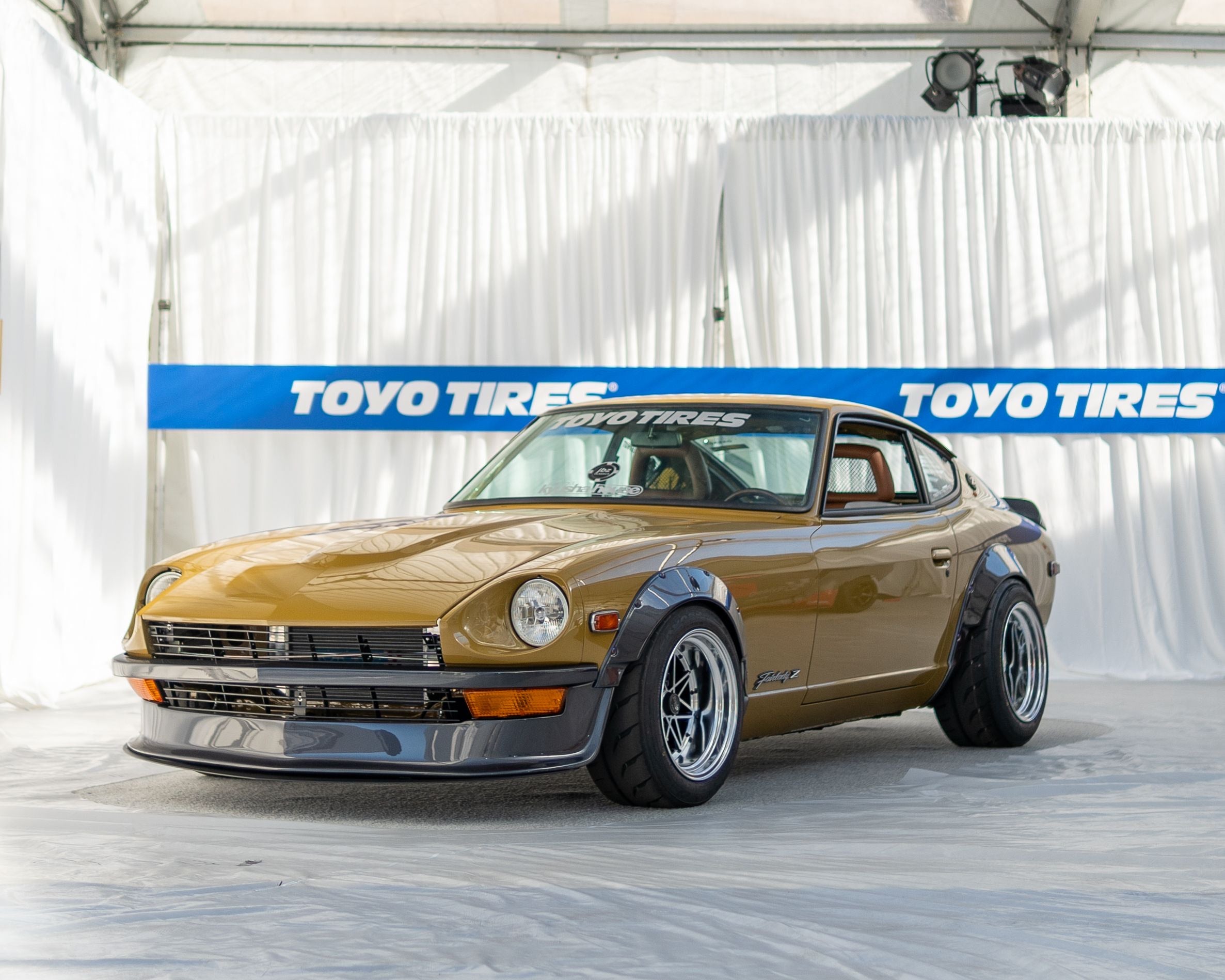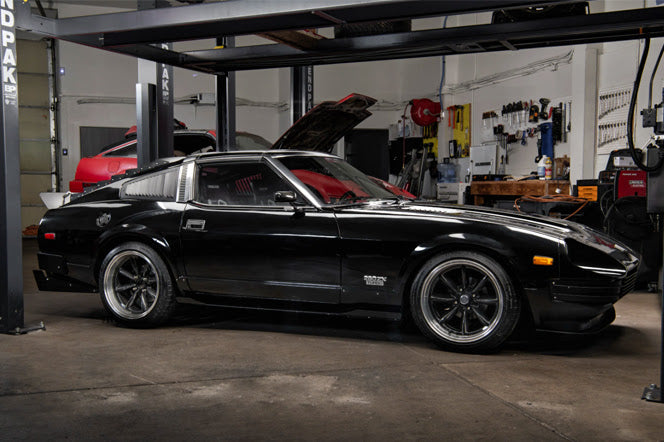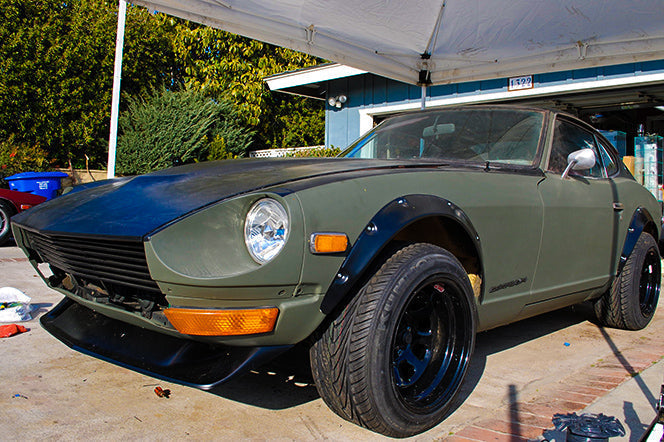A 45-year-old sports car needs care, and the Datsun 280Z is a perfect example of this whenever you go to start it up. The L28 inline-six engine that came in these cars from 1975 to 1978 can still give you that great exhaust sound on your Sunday drives. But you have to follow a standard maintenance schedule - if you don't, you're going to run into problems pretty fast. There's nothing worse than having your weekend drive ruined by a problem that you could have prevented with the right maintenance.
Why should you still change your Z's oil every 3,000 miles when newer cars go much longer between changes? I've seen plenty of Z owners find this out the hard way after something goes wrong. The reason has to do with how these engines were designed to work with the oil that was available back in the 1970s, and those basic requirements haven't changed as the car has become older. The maintenance schedule from the factory might feel like overkill compared to what we're used to. But it takes into account that your seals and gaskets are old, and even the best can't fix parts that are wearing out.
I'll tell you about some of the factory maintenance schedules that have kept these classic cars running all of these years!
Table of Contents
Factory Service Schedule for Your 280Z
You'll see that oil changes and basic checks need to happen about every 3,000 miles. When you hit 6,000 miles, you should definitely check your fuel lines to make sure they don't have any cracks or loose connections.
At 12,000 miles, you'll need to do some bigger maintenance jobs. You should check your transmission service and check your differential oil. Owners skip checking their differential and then pay for expensive R200 gear damage down the road. If you don't take care of your differential, it can wear out these expensive parts faster than you might think. Your rear axle needs clean oil to manage the stress of driving. When the differential fluid gets dirty, it'll wear your gear teeth down until they're just metal shavings.
At 24,000 miles, you'll be working on some of the bigger parts of your car. You need to check your PCV valve, which controls the pressure in your crankcase. When a PCV valve starts to go bad, you'll see a few different problems pop up.
Those original 3,000-mile oil change intervals made sense in the 1970s. The oils back then would break down much faster than the synthetic oils we use today. You were actually protecting your engine by changing oil that quickly. Today's are much better than those old oils in just about every way. Your engine gets protection from additives in the oil that they didn't have back in the 1970s. You can go longer between oil changes when you use synthetic oil.

The factory says you should replace your rubber fuel hoses every 25,000 miles. The non-stop heating and cooling cycles in your engine bay make the rubber weaker as time goes on. All of that heat under the hood takes a toll on rubber parts. When you put in fresh hoses, you're making sure you won't have any dangerous fuel leaks.
If you have an automatic transmission, there are some details you'll need to keep in mind when servicing it. When checking the fluid level, you'll need to be careful - the transmission needs to be in Drive for an accurate reading. Make sure that your parking brake is on, and put wheel chocks behind your tires to keep the car from moving.
After you finish any maintenance work, you'll need to adjust your idle speed again. The factory tells you what RPM your engine should idle at. Getting the idle adjustment right changes how your car feels when you drive it. When your idle is rough, you'll feel that vibration through the whole car. Once you get those RPM settings just right, those shaking problems disappear completely.
Parts That Fail Early on the L28 Engine
Some of the parts on your 280Z are going to fail before the factory schedule says they should. The head temperature sensors tend to go bad early, and those fusible links will corrode quite a bit faster than anyone expects. Most mechanics run into this pattern. The half-shaft U-joints also tend to wear out quite a bit sooner than what the manual tells you.
When you look at the 1977 California emissions models, these cars had catalytic converter problems way ahead of schedule because of clogging problems that showed up in CARB case files. The heat soak from the exhaust system and the rubber seals that get hard with age were the main problems. There aren't a lot of parts that'll ruin a weekend drive faster than when your car won't start because your corrode.
The distributor system needs extra attention during standard maintenance. If there's any play in that distributor shaft, it's going to interfere with your dwell time and throw off your spark timing. You'll feel it as a rough idle and poor performance before it gets even worse.

When your distributor starts to wear, it creates problems that spread throughout your whole ignition system. A worn shaft creates timing that's all over the place, which puts stress on other parts and makes your engine run less efficiently. Your car will start running rough, and you'll be chasing down multiple symptoms that all trace back to this one failing part.
You'll also want to watch out for vacuum dashpot leaks. When that part starts leaking, it'll let extra air into the intake manifold - this creates lean conditions that can damage your valves over time. The symptoms usually start out as hesitation when you're trying to accelerate.
You'll need to check your ignition timing because when the timing is off, it causes roughness and juddering at low speeds in the third and fourth gears. Ignoring these early warning signs can cause expensive valve damage or ignition system failure.
How to Care for Your Car in Storage
Your 280Z might sit in the garage for months at a time. Maybe you only drive it on weekends or for special occasions. Either way, you're going to want to protect it from the damage that comes from just sitting there doing nothing.
Before you put your car away for the winter or for a long period of time, make sure to add some fuel stabilizer - this helps stop the ethanol in modern gas from separating and causing problems. You'll also want to check your tire pressure and hook up a battery tender to keep your electrical system in shape. Most owners don't bother with the battery tender at all. But it does help.
Every few weeks, you should start up the engine and let it get completely warmed up - this gets all your fluids moving around and stops the seals from drying out. While the engine warms up, go ahead and pump the brakes a few times - this keeps the calipers moving so they don't freeze up on you.

Your Z needs to move around, or parts will start to go wrong from sitting still too long. A clutch master cylinder that sits unused will go bad faster than one that gets used. The seals dry out when the fluid doesn't move through them. The same thing happens with your brake system and power steering.
Fuel system problems show up after your car sits for a while. Rust and other contaminants start to build up in the tank when cars just sit there unused for months. Some owners don't find out about fuel starvation problems until they take their car out for a hard drive, and by then, the damage is already done. Replacement fuel tanks used to be almost impossible, though there are some you can get now if you need them.
When your fuel gets contaminated, what should have been a great weekend drive turns into calling for a tow truck. Ethanol pulls moisture right out of the air and causes corrosion all through your fuel lines. Your fuel pump has to work harder when the filters get clogged, and parts start corroding.
You'll also want to keep an eye out for rodents. They love to get into stored cars and chew on the wiring harnesses. Chewed-up wires get expensive to fix in a hurry. A few mothballs or dryer sheets around the engine bay usually do a decent job of keeping them away.
Easy Upgrades That Cut Back on Your Maintenance Work
Some of the reliability upgrades you can make will actually make your 280Z easier to take care of without destroying what makes it special. The main point is to choose modifications that solve real problems you're running into instead of just chasing after bigger power numbers.
Most owners pick the wrong upgrades when they first start out. You spend your money on flashy parts while the basic systems that keep the car running continue to break down on you. The smart upgrades are the ones that target the parts that actually fail and leave you stuck on the side of the road. You can get rid of the non-stop point adjustments that are such a pain with original distributors. You'll go from having to change your timing every few thousand miles to being able to forget about it completely. Modern aluminum radiators also run cooler and last longer than the original copper units that love to spring leaks when you least expect it.
Synthetic oil gives you another big maintenance win. Why does moving to synthetic 10W-40 let you go 5,000 miles between oil changes? The molecules in synthetic oil resist breaking down much better than standard oil does. Your engine is nice and clean inside, and you don't have to change the oil nearly as much, which saves you time and money over the years. Stainless steel brake lines won't expand under pressure the way rubber ones do - this keeps your brake pedal nice and firm and helps you stay away from that spongy feeling that tends to develop as rubber lines age. Stainless lines are going to last forever. You won't have to worry about sudden brake line failures when you're out enjoying a spirited drive through the mountains.

Now, here's where you need to be careful with these upgrades, though. Every single upgrade you make creates new ways parts can fail on you. Electronic ignition modules can fail in ways that leave you completely stuck with no way to get home. Aftermarket fuel injection kits frequently have fuel pump pressure that doesn't match what the system needs, which creates even more problems than the original setup ever gave you.
These reliability modifications create something of a double-edged sword for classic car owners like yourself. You're going to gain that modern dependability you want. But you're also going to lose some of that period authenticity that makes these cars special. The modules and systems you install might not have replacement parts that you'll find in twenty years. Your easy mechanical car starts to depend on electronic parts that could become impossible to find down the road.
Each modification you make can become a trade-off between having modern convenience and keeping everything authentic. Some owners are perfectly happy to accept modern reliability improvements. But others like to keep every single part the way it came from the factory. The choice depends on how you're planning to use your car. If it's just a weekend cruiser, you can probably manage some downtime while you track down authentic parts for repairs. But if you're trying to drive it every day, you're going to need parts that work every single time you turn the key.
Where to Find the Best Technical Help
Factory manuals should be your first stop when you're looking for maintenance information you can trust. These manuals have the exact specifications that Nissan engineers used back in the day. There's no guessing in them - just the real numbers and procedures.
Classic Z magazines and forums are also great places to find technical facts. Universities have scanned decades worth of automotive publications that you can look at for free online. And the material might look old. But the mechanical advice is still just as solid as it was back then. Most of these archives have search functions that work, too. Enthusiast forums like ClassicZCar let you learn from people who actually work on these cars day in and day out. On that note - one forum thread shows a 150,000-mile differential overhaul with photos. You can see what someone else ran into when they took apart the same part you're trying to fix.

When real mechanics post online, they share their mistakes right along with their successes. Their posts show you which shortcuts will come back to bite you months down the road. You basically get to learn from decades of trial and error without having to make all of the expensive mistakes yourself. Not a bad deal. Trust me!
That said, you need to double-check everything you read online. Forum advice comes from what worked for one person, and it doesn't always line up with what the factory recommends. Someone might swear by a torque setting that's actually different from what Nissan recommends. When you use bad information, it'll cost you time and money on replacement parts. Mixed advice from different sources just leaves you second-guessing every choice you make. Your whole restoration project slows down when you spend more hours researching online than actually working on the car.
One tip that helps is to search by the section codes like EL for electrical problems or EN for engine work - this way, you don't have to flip through hundreds of pages just to find what you're looking for. Books like give you input that connects the dots between factory manuals and forum discussions. These restoration guides take the technical language and turn it into helpful steps you can actually follow.
Build Your Dream Car
The maintenance schedule we went over earlier is going to give you a roadmap to follow, and once you get familiar with where it matters most, then you'll know where to focus your attention. The knowledge bases that are out there can help make maintenance easier by cutting down on some of the work. And the best part is that you can always try forums and manuals where other owners share what they've learned. All of that shared knowledge comes from people who've been working on these cars for decades. These Datsuns have been around for so long that pretty much every problem you might run into has already been figured out by someone else.
These classic Datsuns do take care of the owners who take care of them. When you first start out, the standard maintenance might feel like quite a bit. But after a while, you're just doing it without even thinking about it. The more work and care you put into your 280Z, the more it'll thank you for it. That makes every weekend drive feel like something you've earned.
This whole experience changes the way you look at your car for the better. Every time you fix something yourself, you feel a little more confident and a little more connected to your car. Your neighbors might not understand why you're out there every Saturday morning working under the hood. But what they don't know is how relaxing it can be to work through your maintenance schedule step by step. The more miles you drive together, the stronger that connection between you and your classic Datsun can become.

If you're doing a rebuild from the ground up or you just want to upgrade a few parts here and there, getting your hands on quality custom parts makes a giant difference in how your project turns out. When you're working on a part of automotive history like this, it's worth it to get quality parts instead of just grabbing whatever's easiest to find. At Skillard, we focus on making custom parts specifically for Datsun owners who know their cars deserve something better than generic replacements. We carry everything from bumpers and aluminum door cards to center consoles and spoilers. We've designed them all to make your 240Z, 260Z, 280Z, or other classic Datsun look better and perform better. Just head to Skillard.com to check out our selection and find what you need for your project.





